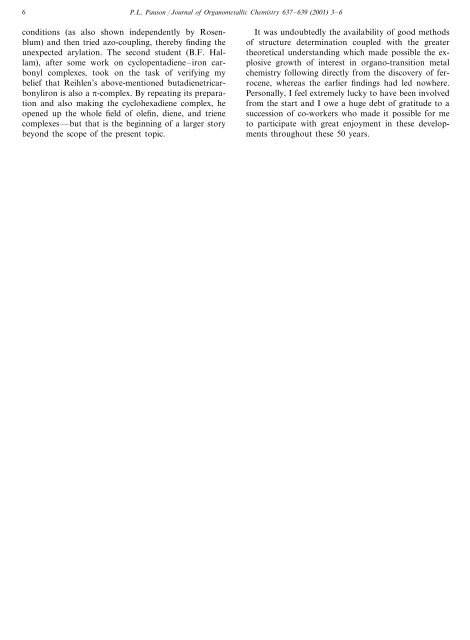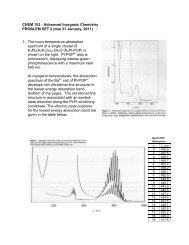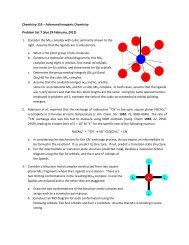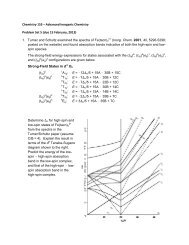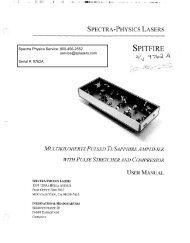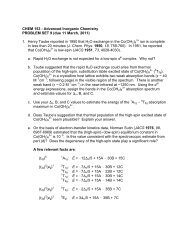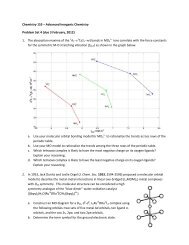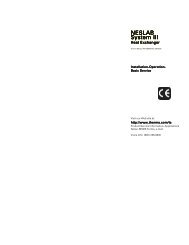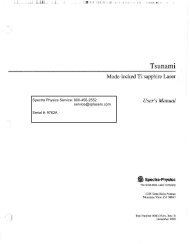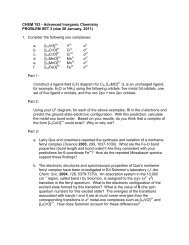Ferroceneâhow it all began
Ferroceneâhow it all began
Ferroceneâhow it all began
You also want an ePaper? Increase the reach of your titles
YUMPU automatically turns print PDFs into web optimized ePapers that Google loves.
6P.L. Pauson / Journal of Organomet<strong>all</strong>ic Chemistry 637–639 (2001) 3–6cond<strong>it</strong>ions (as also shown independently by Rosenblum)and then tried azo-coupling, thereby finding theunexpected arylation. The second student (B.F. H<strong>all</strong>am),after some work on cyclopentadiene–iron carbonylcomplexes, took on the task of verifying mybelief that Reihlen’s above-mentioned butadienetricarbonylironis also a -complex. By repeating <strong>it</strong>s preparationand also making the cyclohexadiene complex, heopened up the whole field of olefin, diene, and trienecomplexes—but that is the beginning of a larger storybeyond the scope of the present topic.It was undoubtedly the availabil<strong>it</strong>y of good methodsof structure determination coupled w<strong>it</strong>h the greatertheoretical understanding which made possible the explosivegrowth of interest in organo-trans<strong>it</strong>ion metalchemistry following directly from the discovery of ferrocene,whereas the earlier findings had led nowhere.Person<strong>all</strong>y, I feel extremely lucky to have been involvedfrom the start and I owe a huge debt of grat<strong>it</strong>ude to asuccession of co-workers who made <strong>it</strong> possible for meto participate w<strong>it</strong>h great enjoyment in these developmentsthroughout these 50 years.


